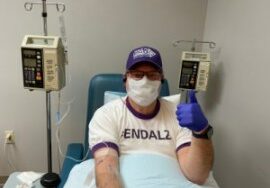The number of younger Americans aged 30 to 64 with Alzheimer’s disease has tripled, a new analysis out of Blue Cross Blue Shield finds. Early onset Alzheimer’s diagnosis rates increased by 200 percent between 2013 and 2017.
“Diagnosis rates for both [early onset Alzheimer’s and Alzheimer’s disease] are rising in younger adults, with the average age of someone living with either form of dementia at 49 years old,” the authors of the report wrote.
“These health trends indicate a need for a focus on appropriate care and support for individuals with either form of dementia and support for their caregivers as the disease progresses,” they continued.
There are currently 5.8 million Americans living with Alzheimer’s disease, and that number is expected to increase to 14 million by 2050.
Early onset Alzheimer’s is a form of the disease that typically appears decades earlier than later onset Alzheimer’s, affecting people between the ages of 45 and 64.
The data was drawn from the BCBS Health Index, and was based on people who were commercially insured, meaning they had health insurance that was not provided by a government program.
The analysis also found that the disease was more likely in women — with 58 percent of the people diagnosed with Alzheimer’s being women. Some geographical areas in the U.S. also showed higher prevalence of early onset Alzheimer’s than others. The North (including Maine, New Hampshire and Vermont), South and Midwest showed higher rates of the disease than other parts of the country.
Early Onset Alzheimer’s Detection
This new analysis hints that the average age of developing Alzheimer’s may be getting lower — and one reason that may be happening is because early detection is becoming more common. Brain imaging technologies like PET scans are being used more and more to diagnose people with cognitive decline and dementia, making it quicker and easier to detect the disease in earlier stages.
According to the report, 86 percent of the people who were diagnosed with early onset Alzheimer’s had received brain imaging in the year prior to diagnosis. And 40 percent of the people who were eventually diagnosed with early onset Alzheimer’s had been originally diagnosed with early onset dementia, or cognitive and behavioral changes.
Where Alzheimer’s was once only able to be identified after death, PET scans can now detect amyloid buildup in the brain when a person is still alive. There are other early detection methods that can point a person in the direction of a diagnosis sooner, including memory tests, and researchers have been working on developing a blood test which can measure Alzheimer’s biomarkers. Some researchers are even exploring the eye as a way to early diagnosis — as retinal imaging may identify Alzheimer’s risk decades before symptoms develop.





